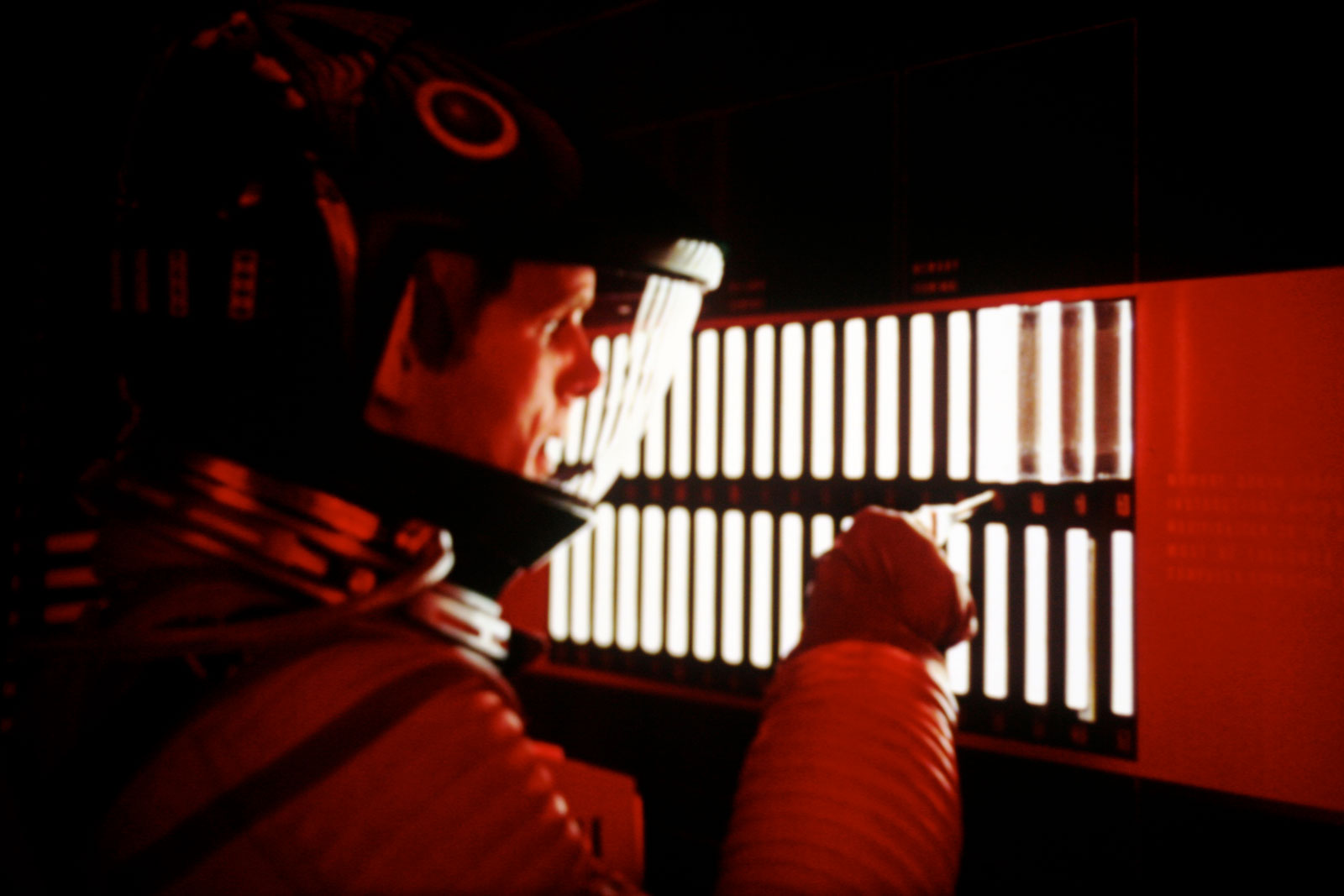
If you ask me, and since I’m writing a review- someone did, this is one the best films ever made.
 Technically stunning and intellectually challenging, Stanley Kubrick’s 2001: A Space Odyssey more than lived up to it’s ever-so-sixties tagline- "the ultimate trip" and in the process set a gold standard for the science fiction genre. In it’s genre (and outside of it for that matter) it’s a film without equal.
Technically stunning and intellectually challenging, Stanley Kubrick’s 2001: A Space Odyssey more than lived up to it’s ever-so-sixties tagline- "the ultimate trip" and in the process set a gold standard for the science fiction genre. In it’s genre (and outside of it for that matter) it’s a film without equal.
The movie is almost arrogantly obscure. An approach that heightens it’s heady philosophical bent and challenges the viewer at practically every turn. There is very little dialogue (about 40 minutes worth out of the film’s 139 minute running time) and when the characters do speak very little is explained outright- a far cry from today’s dumb-it-so-far-down-it-must-crawl approach to storytelling. No one turns to the camera under the pretext of getting General "Thunderbolt" Ross and the rest of his cigar chomping cronies up to speed and gives the Cliff’s Notes version of the plot to the audience. Instead of that expository silliness, Kubrick lets the story unfold as a rich synthesis of music and imagery, a decision which, when mixed with 2001’s metaphysical/ science fiction hijinks, forces the viewer to constantly examine, process and interpret. Very few films of this scale would even consider taking such an approach. This one does and succeeds.
Actually, there isn’t an element in the film that doesn’t succeed. The use of music alone is awe-inspiring. Utilizing existing works by composers like Johan Strauss and György Ligeti, Kubrick weaves a perfect blend of sight and sound. For example, the image of Dr. Frank Poole (Gary Lockwood) floating lifeless in his space suit set against "The Blue Danube" is at once humorously ironic and poignant. No words could evoke the same complex emotions that Strauss’ pleasant waltz does. With this process he creates new, almost universal associations for the songs. Think of how deeply Kubrick’s use "Thus Spake Zaruthustra" is ingrained in our popular culture for prime evidence of the power of the music in this film.
And then there are the special effects and production design. Representing both a quantum leap for the time and a standard for seemlessness that has yet to duplicated, the look of this film are nothing short of mind-boggling. The opening shot of the Sun, Earth Moon in alignment taken from beyond the moon has the exact character of shots from the Space Shuttle. If I didn’t know better I’d wonder how they got a camera up there a year before they landed a man on the Moon. And that’s just the beginning. Throughout, the eye candy factor for this film is off the charts and it’s almost a constant barrage. All of it leading to the ultimate kick in the head, the finale. It’s a bewildering, exhilarating journey of mind and body that culminates in the haunting, brain-bubbling image of the Star Child floating high above the Earth.
All in all, there’s simply nothing like it.
This article was originally published in Boston's Weekly Dig (now digBoston) in December 2000.